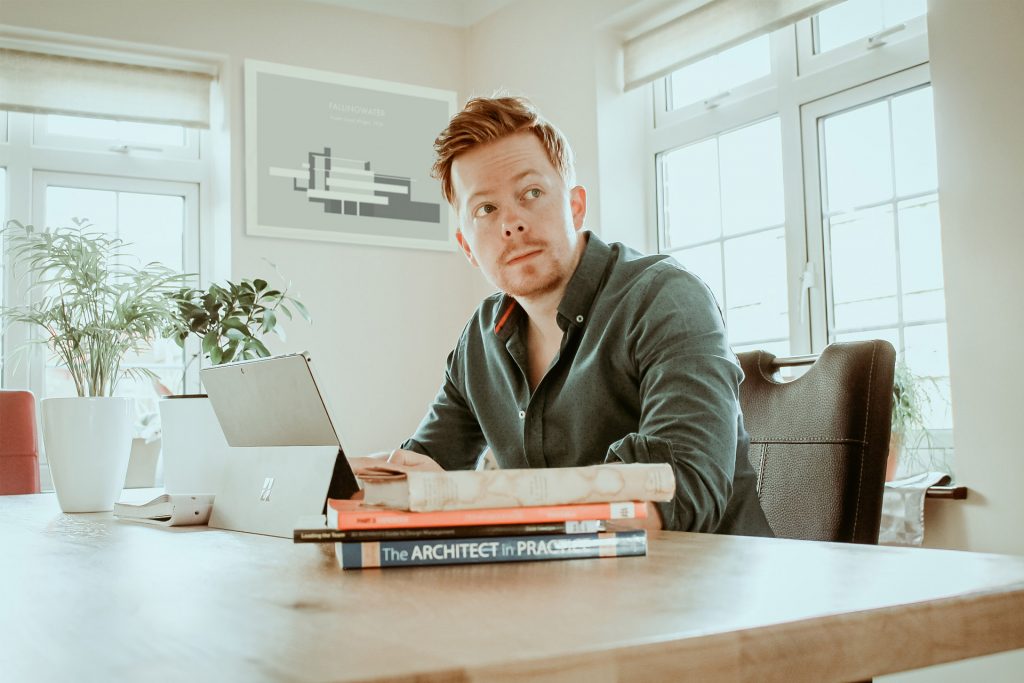Kent School of Architecture and Planning’s PDip Architectural Practice course enables students to complete their professional training and follows the ARB’s criteria for Part 3, thereby enabling graduates who have completed all three examinations to apply for professional registration as Architects in the UK. We are currently seeking ARB prescription and RIBA validation. Find out from current student, Bradley Sowter about his experience studying on the course.
Why did you choose to study at Kent?
Having studied my bachelors (ARB part 1) and MArch degree (ARB Part 2) at the University of Kent, I was attracted to the prospect of Kent School of Architecture and Planning (KSAP) providing the PDip Architectural Practice (pending ARB Part 3) course.
What attracted you to the course?
The way in which the course was structured attracted me. I wanted a course that would suit my professional career. As a commuter, I would struggle to find time after work to attend evening lectures – which is a common course structure for PDip Architectural Practice. At KSAP, the intensive structure meant that I could solely focus on my academic studies and absorb as much information as possible. This also meant that I could focus on the relevant modules without the need to wait for upcoming lectures.
What have you particularly enjoyed about your studies/time here?
I have particularly enjoyed the cross over between academic studies and my professional career. During my Part 1 and Part 2 years out in industry, I was unaware of contracts and the management side of architecture. Whilst studying PDip Architectural Practice, I developed the knowledge and confidence to discuss such matters at Work. I would have in-depth discussions with directors at my practice about our contractual obligations, and how we could manage the project more effectively.
Which module did you enjoy the most, and why?
My favourite module was Professionalism, Clients, Users and the delivery of services (AR857). In this module, we created a RIBA manifesto, as if we were standing as a candidate for the RIBA presidential elections. This was a great opportunity to voice my opinions on the architectural industry. It was a chance to write down areas of the industry that I am passionate about changing, such as, diversity and climate change. This module has translated in my professional career, looking at these themes within the practice, and how to improve them.
What about the teaching?
The teaching of this course has been supportive. Due to size of the course compared to undergraduate studies, that has enabled a more individualised approach to teaching, understanding that every student is different.
Having external speakers from specialised areas such as construction law, CDM, RIBA and the local council have been fundamental to our understanding of these subject matters.
How did this course improve your employability prospects for your chosen career path?
This course has enabled me to progress in my career. This is the final stage of my journey to become a qualified architect since starting in 2011 at KSAP. This PDip Architectural Practice will open many avenues.
What are your future plans/aspirations?
My immediate plans after completing the course is to register with the Architecture Registration Board (ARB) to become a qualified Architect. My plans for the future are to teach at a university level and possibly start my own architectural practice. I hope that I can inspire the new generation of students that have decided to venture into the world of architecture and design.
Finally, what advice would you give to graduates thinking of coming to Kent to study at postgraduate level?
Similar to your first year of undergraduate studies – be prepared to learn a lot of information fast. Unlike ARB (Part 1) and ARB (Part 2), you will be learning architecture from a whole new perspective; i.e. you will be learning about the business side of architecture as well as the legal and contractual sides. If are willing to embrace this side of architecture you will have a greater understanding of the symbiotic relationship between design and business.

